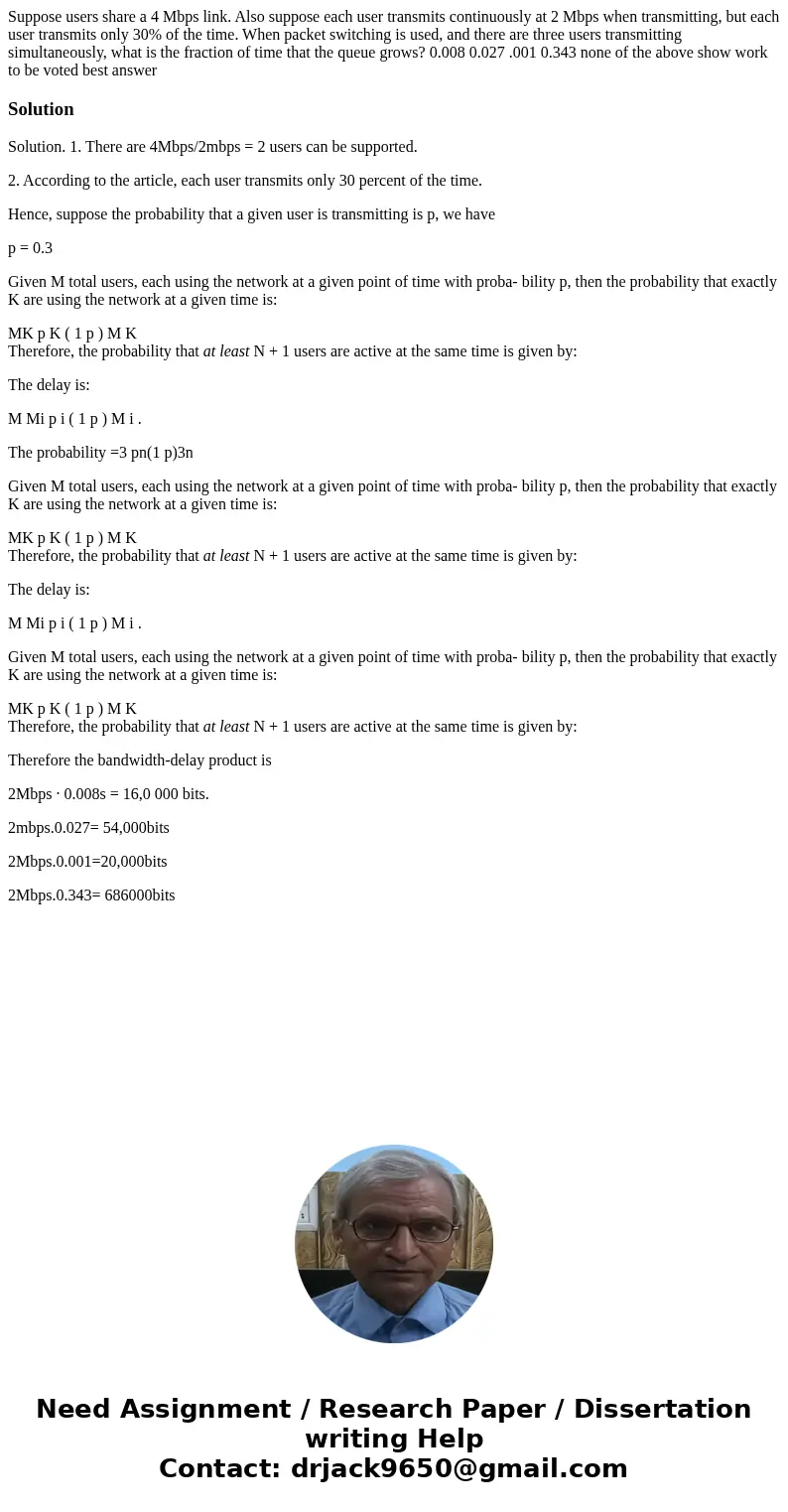Suppose users share a 4 Mbps link Also suppose each user tra
Suppose users share a 4 Mbps link. Also suppose each user transmits continuously at 2 Mbps when transmitting, but each user transmits only 30% of the time. When packet switching is used, and there are three users transmitting simultaneously, what is the fraction of time that the queue grows? 0.008 0.027 .001 0.343 none of the above show work to be voted best answer
Solution
Solution. 1. There are 4Mbps/2mbps = 2 users can be supported.
2. According to the article, each user transmits only 30 percent of the time.
Hence, suppose the probability that a given user is transmitting is p, we have
p = 0.3
Given M total users, each using the network at a given point of time with proba- bility p, then the probability that exactly K are using the network at a given time is:
MK p K ( 1 p ) M K
Therefore, the probability that at least N + 1 users are active at the same time is given by:
The delay is:
M Mi p i ( 1 p ) M i .
The probability =3 pn(1 p)3n
Given M total users, each using the network at a given point of time with proba- bility p, then the probability that exactly K are using the network at a given time is:
MK p K ( 1 p ) M K
Therefore, the probability that at least N + 1 users are active at the same time is given by:
The delay is:
M Mi p i ( 1 p ) M i .
Given M total users, each using the network at a given point of time with proba- bility p, then the probability that exactly K are using the network at a given time is:
MK p K ( 1 p ) M K
Therefore, the probability that at least N + 1 users are active at the same time is given by:
Therefore the bandwidth-delay product is
2Mbps · 0.008s = 16,0 000 bits.
2mbps.0.027= 54,000bits
2Mbps.0.001=20,000bits
2Mbps.0.343= 686000bits

 Homework Sourse
Homework Sourse